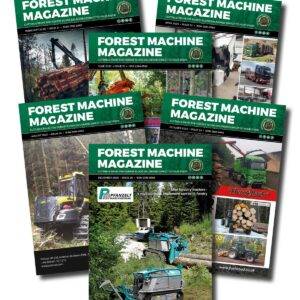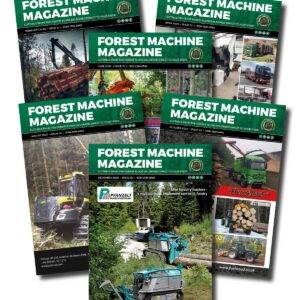Productive tree species have invaluable role in improving UK’s woodland biodiversity urges Confederation of Forest Industries
- Productive tree species have an invaluable role to play in increasing and protecting the UK’s biodiversity
- Need to move away from “broadleaf species good”, “productive species bad” debate
- Report by Confor argues that progressive and ecologically minded forest management is the key
– Forestry and wood trade body, Confor (Confederation of Forest Industries), has called for a new approach to productive planting in relation to improving the UK’s woodland biodiversity. In their recent meeting with the government’s Forestry Commission Chief Executive, Richard Stanford, Confor stressed that the business of productive forestry in the UK has an invaluable role to play in increasing and protecting biodiversity – both domestically and globally.
While it is now recognised that productive afforestation and reforestation efforts are crucial to help meet the UK’s climate targets – they are believed to be the only scalable “negative emissions” strategy” – the additional benefits for biodiversity and wildlife have largely been overlooked or dismissed.
The merits of native tree species versus non-native or so-called “exotic” trees has come to dominate much of the debate around productive forestry and biodiversity in the UK. Confor is keen to address the importance of productive forestry and wood production in supporting biodiversity, its role in reversing biodiversity loss, as well as dispelling myths that surround productive forestry’s ability to contribute to biodiversity improvement.
A report by Confor presents evidence that coniferous species of trees like Sitka spruce and Douglas pine, which are planted for productive forestry, can be an important component of conservation management in a wide range of woodland types. Well-managed conifer forests with plenty of light and structure provide habitats for a wide range of mammals such as pine martens and red squirrels, raptors and other birds, bats, reptiles, insects, mosses, lichens and fungi. At the last count, Scottish conifer forests were home to 42 species on the International Union for Conservation of Nature (IUCN) threatened animal Red List.
Importantly, conifers also play a pivotal role in protecting native broadleaf trees by reducing the pressure to harvest them.
Over recent decades, the decline in broadleaf woodland management is largely responsible for the deterioration in its value as a habitat. Soils have degraded to make them less fertile, less healthy, and less able to store carbon. But conifers thrive on this thin soil and are proven to grow better than their broadleaved cousins, making the planting conifers one of the best methods for improving soil quality.
The report argues that a significant shift in thinking is required to end the debate that only native broadleaf tree species can benefit biodiversity – with the key being an appreciation of how modern-day sustainable forestry management can deliver rapid and significant improvements in habitat quality.
“Too many discussions around the future of UK woodlands have pitted native broadleaf species against productive species as competing alternatives”, said Stuart Goodall, CEO, Confor. “We need a properly balanced, progressive and ecologically considered forestry solution which protects and improves the UK’s biodiversity and meets the country’s need for wood production. It should no longer be a case of “broadleaf trees good” and “productive species bad”.
Due to the climate emergency, Confor has previously called for a 50-50 split between broadleaf and conifer planting – estimating that if 18,000 hectares were planted every year, by 2030 these trees would sequester 2.04 MtCO2e, of which over 1.7 MtCO2e stored by conifers alone. Such an equitable species split would also deliver the benefits a more diversified mix of productive and broadleaf trees, including improving and protecting biodiversity and wildlife habitats.
Other considerations
- Current afforestation in the UK is a fraction of what it was a few decades ago. The UK now only has 13% forest cover compared with almost 40% in continental Europe. With few remaining semi-natural woods or native tree species suitable for large-scale wood production, the UK relies on planted forests of primarily non-native species to supply its timber requirements.
- Confor has warned that the UK faces declining supplies of home grown wood in the near future due to lack of productive tree planting. Currently the UK only grows around 20% of its wood requirement, leaving it exposed to a very significant balance (~80%) needing to be imported from the US, Sweden, Norway and other countries. The UK is the world’s second largest importer of wood, importing £7.5 billion annually.
- The Conservative government led by Boris Johnson pledged to plant 30,000 hectares (75,000 acres) of new woodland every year by 2024, but official statistics recently released show less than 14,000 hectares were planted in the year to March 31st, 2022.
- Planted productive forests account for around 7% of the world’s forest cover but contribute 46% of the wood we use for construction and manufacturing.
- Productive forests deliver a wide range of natural capital benefits besides wood and carbon capture, including reduction in air pollution and opportunities for recreation which benefit physical and mental health. Every £1 private profit generated through the management of forests for timber delivers £18 public benefit.
-
That’s a remarkable amount of work hours for a single machine, the Norcar 600 owned by Erkki Rinne is taken well care of, it even has the original Diesel engine.
-
Kieran Anders is a forestry contractor working in the lake district. His work involves hand cutting and extracting timber using a skidder and tractor-trailer forwarder.
-
It is not possible to eliminate chain shot, but there are simple steps that can be taken to reduce the risk.
-
Arwel takes great pride in the fact that the mill has no waste whatsoever, “the peelings are used for children’s playgrounds, gardens and for farm animals in barns in the winter and the sawdust has multiple uses in gardens and farms as well.
-
Timber hauliers need to encourage young blood in, and also look after the hauliers we have, we need make the sector a safe and positive place to work.
FIND US ON
Related Posts
Forest Machine Magazine is written and edited by a forest professional with over 40 years hands on experience. We are dedicated to keeping you informed with all the latest news, views and reviews from our industry.
To support us you can subscribe to our bi-monthly magazine which is delivered to your door from only £30 per year.
Subscribe here
#homeoflogging #writtenbyloggersforloggers #loggingallovertheworld
-

 1 Year Subscription£0.00
1 Year Subscription£0.00 -

 2 Year Subscription£0.00
2 Year Subscription£0.00 -

 Issue 38£6.00
Issue 38£6.00 -

 Sustainable Logging: Powering The Planet T-Shirt£17.50 – £20.00
Sustainable Logging: Powering The Planet T-Shirt£17.50 – £20.00 -

 Sustainable Logging: Powering The Planet Hoodie£33.00 – £36.00
Sustainable Logging: Powering The Planet Hoodie£33.00 – £36.00

